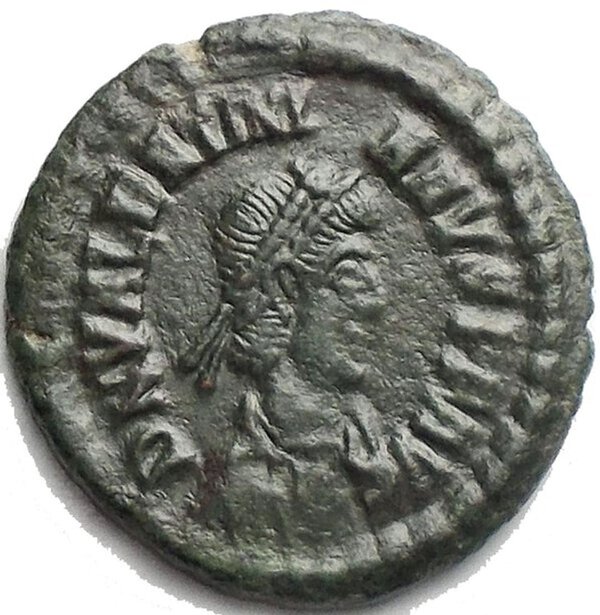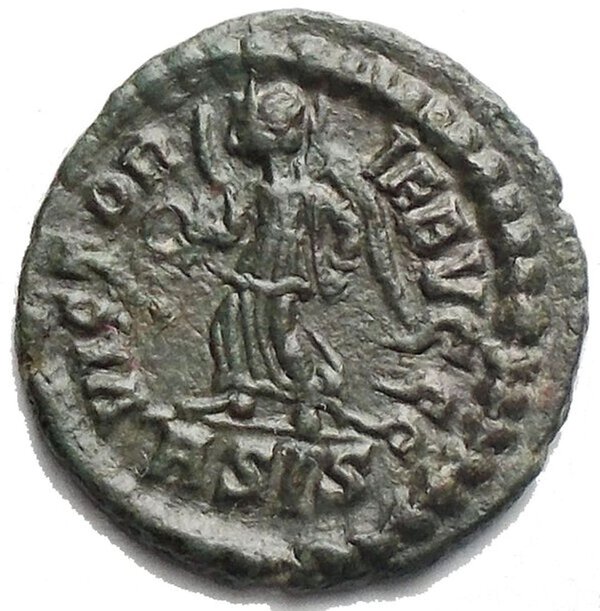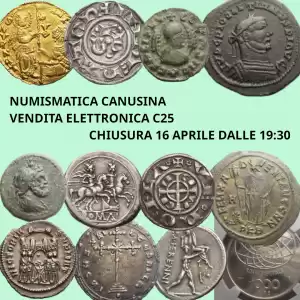

Valentinian II AD 375-392. Siscia Follis Æ 14,7 x 14,9 mm. 1,25 g D N VALENTINIANVS P F AVG, draped, cuirassed and pearl-diademed bust right / VICTOR IA AVGGG / ASIS, Victory walking left, holding wreath and palm-branch. aEF. Green patina
Valentinian II, ascending to the throne of the Roman Empire in AD 375, was a pivotal figure during a tumultuous period in Roman history. Born in AD 371, he inherited the mantle of emperor upon the death of his father, Valentinian I, at a tender age. As a result, his rule was initially guided by regents and influential advisors. During Valentinian II's reign, the Roman Empire was deeply divided. He ruled over the western provinces, while his brother Valens governed the eastern territories. This division underscored the immense challenges of managing an empire stretched to its geographical and administrative limits. A defining aspect of Valentinian II's reign was the religious conflict between Nicene Christianity and Arianism. Although raised in the Nicene Christian faith, his mother held sympathies for Arianism, leading to religious tensions that reverberated throughout his rule. Powerful advisors and generals, notably figures like Arbogast, exerted substantial influence over Valentinian II's decisions and policies. Their sway over imperial affairs showcased the complexities of governance during this period. Tragically, Valentinian II's life ended abruptly and under mysterious circumstances in AD 392, possibly by his own hand. His death marked the conclusion of the Valentinian Dynasty, as the western and eastern halves of the Roman Empire continued to chart their separate courses.


